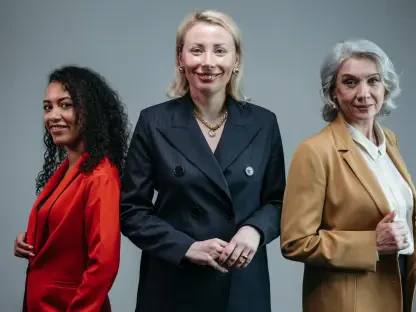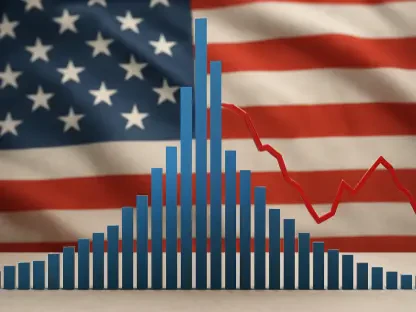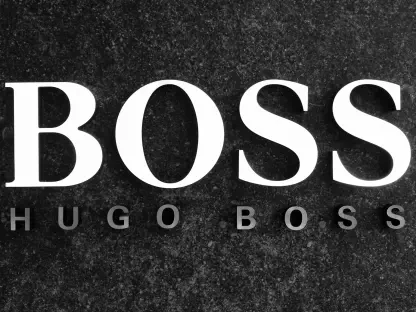When Airbnb cofounder and former chief product officer Joe Gebbia announced he was joining the government efficiency commission DOGE, many saw it as a bold leap into the public sector. With the unique blend of Gebbia’s “designer brain and start-up spirit,” this transition marks an ambitious effort to tackle some of the government’s most persistent inefficiencies. Gebbia’s first target is the outdated, cumbersome paper-based retirement system for federal employees—a system so inefficient that it currently allows fewer than 10,000 retirements per month due to its manual nature. In his announcement, Gebbia revealed he plans to bring significant changes to this antiquated process, starting by addressing its core inefficiencies and embracing digital transformation.
The Outdated Paper-Based Retirement System
A Manual Process Stuck in the Past
One of the most striking revelations about the federal retirement system is its reliance on a manual, paper-driven process. Retirement paperwork is manually processed and stored in an old limestone mine located in Boyers, Pennsylvania. This outdated system has drastic limitations; it restricts the number of retirements that can be processed to only 10,000 per month. The laborious nature of this system not only slows down the retirement process but also poses significant risks of errors and data loss. Joe Gebbia’s involvement promises a fresh perspective on solving these perennial problems by leveraging digital innovation in ways that could streamline operations and enhance efficiency across the board.
Elon Musk highlighted these inefficiencies, spurring the Office of Personnel Management (OPM) to initiate trials for a digital platform designed to replace the current system. However, transitioning from a paper-based to a fully digital system is no small feat. OPM’s former Chief Information Officer, Guy Cavallo, indicated that this transition could take years to complete fully. Despite these hurdles, the testing phase has shown promising results. In a video shared by Gebbia, OPM’s acting director, Chuck Ezell, announced the successful processing of the department’s first fully digital retirement application in just a week, a vast improvement from the manual process, which averages 64 days. This demonstrates that even interim steps towards digitization can significantly accelerate processes, reducing wait times and improving user satisfaction.
The Role of Digital Innovation
As the public and private sectors increasingly rely on digital solutions to enhance efficiency and user experience, Gebbia’s plan to digitize the federal retirement system fits into broader technological trends. By transforming a cumbersome manual process into a streamlined digital one, the potential benefits extend beyond mere speed. Digitization can ensure greater accuracy, easier access to records, and better overall security. These improvements can directly benefit thousands of federal employees nearing retirement, offering more predictability and clarity in their retirement planning.
Gebbia’s call to action for other qualified individuals to join in this task of creating user-friendly digital products for the government emphasizes the collaborative approach needed to achieve such widespread institutional change. This shift towards a tech-driven solution in federal retirement processing also reflects Gebbia’s broader alignment with key figures such as Musk. Gebbia has been a Tesla board member since 2022, and his history of voting Democrat, before backing Trump in 2016 due to shifts in the Democratic party, illustrates his willingness to cross traditional boundaries to achieve innovative solutions.
A Collaborative Effort
Alignment with Tech Leaders
Gebbia’s transition into government work is underpinned by his close alignment with other pioneering tech leaders. His presence on the Tesla board since 2022 is indicative of his commitment to innovation, a trait he is now carrying into his role on DOGE. This board experience likely provided him with valuable insights into addressing large-scale organizational inefficiencies through technological means. Partnering with someone as forward-thinking as Elon Musk could bring unparalleled expertise and drive to the government’s digitization efforts.
In engaging with this task, Gebbia is setting the stage for notable collaborations between the tech industry and government agencies. By pushing for the federal retirement system’s overhaul, he taps into the best practices of the private sector, potentially spearheading a new era of efficiency and modernization in government operations. Such collaborations can bridge the gap between long-standing bureaucratic practices and cutting-edge digital innovation, ensuring that public services evolve with technological advancements.
Driving Modernization in Government Operations
When Joe Gebbia, the cofounder and former chief product officer of Airbnb, announced his new role with the government efficiency commission DOGE, it was seen by many as an audacious step into the public sector. Gebbia’s transition is particularly notable due to his unique “designer brain and start-up spirit.” This shift signals a bold initiative to address some of the government’s most entrenched inefficiencies. Gebbia has identified his initial target: the outdated, labor-intensive, paper-based retirement system for federal employees. This antiquated system is so inefficient that it processes fewer than 10,000 retirements each month due to its manual nature. In his announcement, Gebbia outlined his intention to revolutionize this obsolete process by tackling its core inefficiencies and spearheading a digital transformation. With his innovative mindset, he aims to modernize government operations, potentially setting a new standard for government efficiency.









